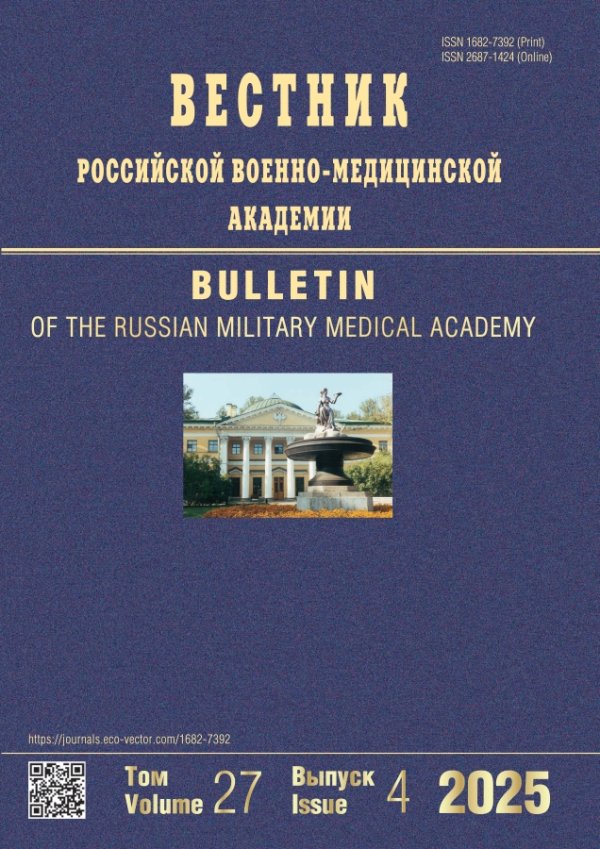The effect of cardiopulmonary bypass on the morphological characteristics of red blood cells and the gas transmission function of blood
- 作者: Khubulava GG1, Romanovskiy DY.1, Volkov AM1, Biryukov AV1, Skibro IR1, Butuzov AG1, Lyubimov AI1, Sizenko VV1, Didenko AV1
-
隶属关系:
- Военно-медицинская академия им. С.М. Кирова
- 期: 卷 21, 编号 2 (2019)
- 页面: 7-12
- 栏目: Articles
- URL: https://journals.rcsi.science/1682-7392/article/view/25910
- DOI: https://doi.org/10.17816/brmma25910
- ID: 25910
如何引用文章
全文:
详细
作者简介
G Khubulava
Военно-медицинская академия им. С.М. Кирова
Email: vmeda-nio@mil.ru
Санкт-Петербург
D Romanovskiy
Военно-медицинская академия им. С.М. Кирова
Email: vmeda-nio@mil.ru
Санкт-Петербург
A Volkov
Военно-медицинская академия им. С.М. Кирова
Email: vmeda-nio@mil.ru
Санкт-Петербург
A Biryukov
Военно-медицинская академия им. С.М. Кирова
Email: vmeda-nio@mil.ru
Санкт-Петербург
I Skibro
Военно-медицинская академия им. С.М. Кирова
Email: vmeda-nio@mil.ru
Санкт-Петербург
A Butuzov
Военно-медицинская академия им. С.М. Кирова
Email: vmeda-nio@mil.ru
Санкт-Петербург
A Lyubimov
Военно-медицинская академия им. С.М. Кирова
Email: vmeda-nio@mil.ru
Санкт-Петербург
V Sizenko
Военно-медицинская академия им. С.М. Кирова
Email: vmeda-nio@mil.ru
Санкт-Петербург
A Didenko
Военно-медицинская академия им. С.М. Кирова
Email: vmeda-nio@mil.ru
Санкт-Петербург
参考
- Искусственное кровообращение в хирургии сердца и магистральных сосудов / под ред. действ. чл. АМН СССР, проф. П.А. Куприянова. - Л., 1962. - 301 с.
补充文件







